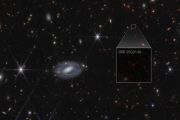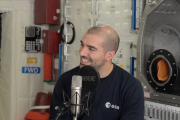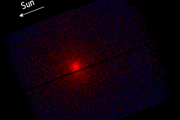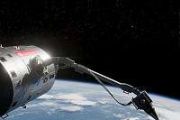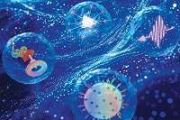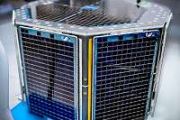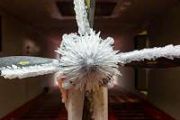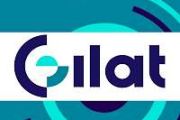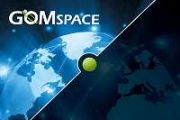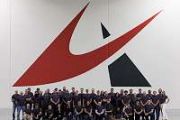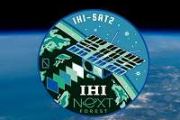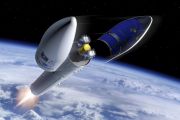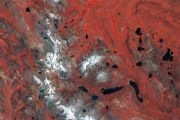
Copernical Team
Photo: NASA ER-2 pilot prepares for GEMx flight
Verifying that you are not a bot
ESA’s Earth from Space exhibit lands in Prague

The Planetarium of Prague has launched Earth from Space, an immersive exhibition by the European Space Agency (ESA), created with partners the German Aerospace Center (DLR) and Ars Electronica Solutions. The state-of-the-art interactive exhibit includes four interactive installations that aim to inspire and fuel the curiosity of future generations.
Up goes Lunar Link
 Image:
One antenna of ESA's Lunar Link being tested in a cleanroom at Thales Alenia Space in Cannes, France
Image:
One antenna of ESA's Lunar Link being tested in a cleanroom at Thales Alenia Space in Cannes, France Watch: HydroGNSS, IRIDE and Greek mission satellites launch

The European Space Agency’s HydroGNSS, a twin-satellite mission to gather data on Earth’s water cycle, is scheduled to launch on 19 November at 19:18 CET (10:18 Pacific Time). Live coverage of the launch will be shown on ESA Web TV.
Ministerial Council 2025

Ministerial Council 2025
Satellites and AI equip policymakers to assess global climate adaptation progress
 A study led by the University of Galway's Ryan Institute details how satellite-based Earth observation and artificial intelligence enable objective monitoring of climate adaptation in the global agrifood sector.
Researchers analyzed how Earth observation data can be linked to indicators in the Global Goal on Adaptation, a Paris Agreement initiative to reduce climate vulnerability. Their wo
A study led by the University of Galway's Ryan Institute details how satellite-based Earth observation and artificial intelligence enable objective monitoring of climate adaptation in the global agrifood sector.
Researchers analyzed how Earth observation data can be linked to indicators in the Global Goal on Adaptation, a Paris Agreement initiative to reduce climate vulnerability. Their wo NATO allies ditch Boeing for new surveillance planes
 NATO countries have ditched plans to buy US-made Boeing aircraft to replace the alliance's ageing fleet of surveillance planes, after Washington pulled out of the programme, the Netherlands said Thursday.
The Western military alliance had announced in 2023 that members would acquire six Boeing Wedgetail jets in one of its "biggest-ever" joint purchases as it looked to bolster its capabiliti
NATO countries have ditched plans to buy US-made Boeing aircraft to replace the alliance's ageing fleet of surveillance planes, after Washington pulled out of the programme, the Netherlands said Thursday.
The Western military alliance had announced in 2023 that members would acquire six Boeing Wedgetail jets in one of its "biggest-ever" joint purchases as it looked to bolster its capabiliti How drones are altering contemporary warfare
 A new book by scholar and military officer Erik Lin-Greenberg examines the evolving dynamics of military and state action centered around drones.
In recent months, Russia has frequently flown drones into NATO territory, where NATO countries typically try to shoot them down. By contrast, when three Russian fighter jets made an incursion into Estonian airspace in September, they were interce
A new book by scholar and military officer Erik Lin-Greenberg examines the evolving dynamics of military and state action centered around drones.
In recent months, Russia has frequently flown drones into NATO territory, where NATO countries typically try to shoot them down. By contrast, when three Russian fighter jets made an incursion into Estonian airspace in September, they were interce 'The war of tomorrow will begin in space': Macron
 Modern conflicts are already being fought in space and the next wars will begin there, French President Emmanuel Macron said Wednesday, singling out the threat posed by Russia and announcing a multi-billion euro increase in spending on military activities in space.
"The war of today is already being fought in space, and the war of tomorrow will begin in space," Macron said in Toulouse, Franc
Modern conflicts are already being fought in space and the next wars will begin there, French President Emmanuel Macron said Wednesday, singling out the threat posed by Russia and announcing a multi-billion euro increase in spending on military activities in space.
"The war of today is already being fought in space, and the war of tomorrow will begin in space," Macron said in Toulouse, Franc 'Splinternets' threat to be avoided, says web address controller
 The risk of the internet fragmenting into national "splinternets" will likely be averted in a UN vote next month, the head of the authority that manages web addresses told AFP on Tuesday.
"The vast majority of the countries that we have met with, including countries who in the past have been very sceptical... believe the current model of governing the internet has worked," Kurtis Lindqvist,
The risk of the internet fragmenting into national "splinternets" will likely be averted in a UN vote next month, the head of the authority that manages web addresses told AFP on Tuesday.
"The vast majority of the countries that we have met with, including countries who in the past have been very sceptical... believe the current model of governing the internet has worked," Kurtis Lindqvist, 




